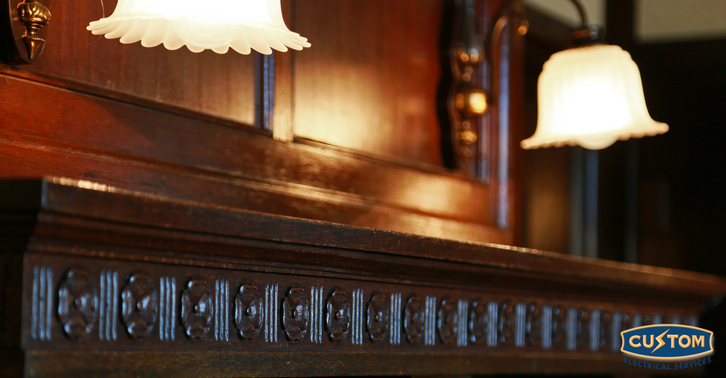
What is Color Temperature?

When most people buy a light bulb, they focus on the wattage or brightness (now expressed in lumens). For roughly a century, people depended on the light given off by an incandescent lamp. These bulbs, while they did give our cities and buildings a chance to expand, have trained us to relate yellow-light to warmth and comfort. Newer light bulbs don’t always offer that same warmth, and it can negatively impact the way we view our homes, so what’s the difference?
Well, for starters, color temperature has little to do with the actual heat given off by the light. Sunlight during the day is roughly 5500K, while the lights in our homes are typically between 2700-3000K depending on the bulb used. This rating is, as are most, based on an interesting attribute of heat. The scale was designed around what’s known as black-body radiation, or radiation is given off by a heated object (this is an inaccurate description but it suits this discussion so we’ll go with it). When a block of tungsten is heated, it begins to glow (as do most metals). At lower temperatures, this metal glows red-hot, but as the temperature (expressed in degrees kelvin) is increased, the brightness increases. A block of tungsten at 2700 kelvins gives off a yellow-white light, the color temperature we are most familiar with. This is just energy radiated out as light and heat. As the temperature increases, the spectrum of light shifts, moving from the infrared range into the ultraviolet range, giving you a shift from red to the blue-white light given by the sun.
How Does This Affect Your Home?
Here’s the interesting thing about color temperature: it affects how things look directly. That off-color paint on your walls? The color of the decorations in your living room? Even the way your face and skin look are all affected by the color temperature of the lighting in your home. So if you aren’t satisfied with how your home looks, maybe it’s time to upgrade your lighting rather than spending a bunch of money on new paint and décor.
Living Spaces – Living rooms, bedrooms, and reading rooms should all use warmer lighting. 2700K lamps will give facial features a softer look, and the yellow light offers a cozy atmosphere. The exception here is for rooms with darker colors or white paint. The white will yellow under these lights (use 3000K instead) while darker-tones will feel cloistered. If the room is adorned with dark woods or rustic décor, use a 3000K bulb to keep things comfortable but breathable.
Bathrooms – We don’t like to see the flaws in ourselves, but the bathroom mirror is where we want to be harshest about our looks. Use a 4000-4500K bulb around your bathroom mirror. This will highlight problem areas while shaving or adding makeup, accentuating lines, wrinkles, or stubble. It’s not pleasant, but if we look our best under the harshest lights, we’ll look even better under the softer tones of other lights. Just keep in mind that higher color temperatures will also show off dust and dirt more easily. Use a 2700K or 3000K bulb in the main overhead lamp to help the bathroom look cleaner (and also giving you a more relaxing light to bathe with).
Closets – We usually ignore the closet lamp because we don’t spend the majority of our day there. This is an oversight since the light in the closet is important for choosing how we’ll look throughout the day. Use a 5500K bulb here. The light is closer to what you’ll see while outside during the day and you’ll get a truer sense of how your clothing looks and works together under more natural lighting conditions.
Garage and Kitchen – Lighting here is tricky. The blue-white spectrum of light (anything over 3500K) helps us stay attentive and alert (this is why office lights are typically in the 4000K range). For your garage, using lights that are above 4000K is fine, and can actually help keep you attentive while working. The problem with the kitchen is that, while you want that same level of attentiveness and many homes have installed fluorescent tubes that meet this need, the blue-white spectrum of light can make a lot of food look terrible. If the chicken you’re working with looks purple or blue when you pull it out to start cooking, lower the color temperature of your lights. 3500K is usually a good choice for kitchen lighting.
For the best in quality electrical repair work and installations, contact the professionals at Custom Electric! Be sure to check back here each week for helpful advice, news, and guides or follow us on Facebook and Twitter!



